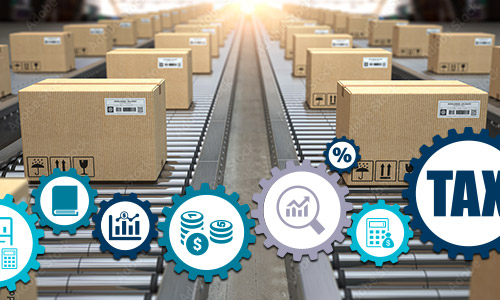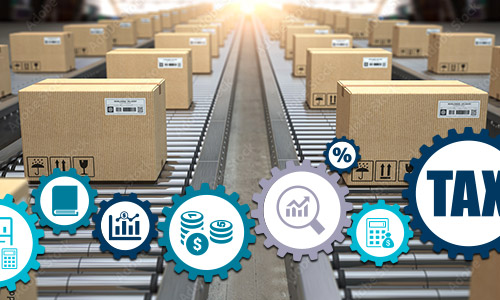
M

Today, the U.S. manufacturing/construction sector is booming — and every state in the union wants a piece of it. According to the Dodge Momentum Index, manufacturing construction starts in the United States achieved a record $41.6 billion in 2022 (+161 percent YOY).
An estimated range of $60–$100 billion is available each year in federal, state, and local credits and incentives for companies making investments — or that are hiring, retaining, or training employees. As you embark on your search, consider overall total cost of ownership. Credits and incentives are a key (but not the only) consideration as decisions are made about where to hang a shingle. Other factors such as access to transportation hubs, proximity to suppliers, and closeness to customers can also impact ongoing costs.
Before investing, keep your process close.
The effective use of state and local credit and incentive strategies can help lower the tax burden, enhance capital investment returns, and improve overall business operations. Often, companies can realize benefits of 15–30 percent of project capital invested.
When considering how, when, and where to expand your business, understanding current manufacturing and distribution (M&D) trends can help keep you in control of negotiations when entering into discussions with a locality pitching for your business.
Location flexibility is becoming permanent.
The competition for a skilled workforce remains intense. Certain states are making changes to their tax credit and incentives programs to allow telecommuting and remote workers to count as qualifying employees. This change allows organizations to offer flexibility to their workforce — while, at the same time, qualifying for tax credits and incentives. This also allows employees to make broader decisions where to live and work — they are no longer tethered to local companies.
Today, the U.S. manufacturing/
construction sector is booming — and every state in the union wants a piece of it. Increased automation can reduce labor issues.
As companies look to reshore activities and bring inventory closer to customers, challenges include higher utility costs and paying a premium for industrial and warehouse space — but most cite labor as their top concern.
When building capacity to improve quality and labor efficiency, automation plays a key role. And it’s not just for high-volume processes anymore. From raw material management to in-process production, quality inspection, packaging, and movement of finished goods in the warehouse, digital solutions are an important driver of ROI in a tight labor market.
Make new connections with agencies.
Sometimes it’s who you know. Successful expansion of M&D operations requires relationships with economic development agencies that can help develop a talent pipeline, assist with training employees, and provide ancillary services like permitting assistance and solving infrastructure issues.
Connections start at the local level and end at the federal level. Each level and agency can provide specialized services and industry-specific assistance. When choosing an agency to work with, dig deep to assess their network of connections to help save time and speed up the project. The effective use of state and local credit and incentive strategies can help lower the tax burden, enhance capital investment returns, and improve overall business operations.
Workforce development programs are growing.
There are over 200 state and federal economic development programs supporting workforce development across the country. These programs assist employers of all sizes and types in recruiting, developing, and retaining employees.
Recent trends show increases to these programs in terms of depth, service capabilities, and funding. It’s worth knowing the resources in your region that can bring new skills to your team and extend your staff.
Environmental, social, and governance (ESG) performance has clout.
Potential employees are increasingly considering a company’s culture and ESG track record in their decision to join a company. Millennials and Gen Z will soon make up a majority of the world’s workforce. These generations place greater importance on environmental and social concerns than their predecessors — and may expect more from employers on these issues. Many states and localities are taking ESG into account in their discretionary incentive decisions. Economic development organizations are evaluating ESG in their scoring analysis, meaning a company’s positive performance can become a differentiator for winning incentives. The more attractive the ESG score, the more attractive the potential package of benefits.
Many states and localities are taking ESG into account in their discretionary incentive decisions. Real money is at stake.
Companies considering a move or expansion should review every opportunity to identify, secure, and monetize available credits and incentives. After you win a package, compliance will require regular proof of progress toward goals.
Consider working with an external professional resource. They can help you map out current operations, future plans, and strategic goals to identify qualifying activities and guide your options for potentially lowering tax burden and driving return on capital investments.
The information contained herein is general in nature and is not intended, and should not be construed, as legal, accounting, investment, or tax advice or opinion provided by CliftonLarsonAllen LLP (CliftonLarsonAllen) to the reader. For more information, visit CLAconnect.com.
-
Jennifer Clement, Strategic Pursuits Leader, Manufacturing & Distribution, CLA
Jennifer Clement is an executive sales and marketing leader specializing in value creation for the C-suite. In her current role at CLA, Jennifer collaborates on strategy with executives of global manufacturing and distribution companies to accelerate results. Previously, Jennifer served as a Global Business Acceleration Leader for Complete Manufacturing and Distribution (CMD). During her time with CMD, Jennifer lived and worked in Asia from 2015 to 2019. Prior to CMD, she spent 10 years in senior care technology. Jennifer started her career at Johnson Controls and spent nine years in global leadership roles, followed by five years at Rockwell Automation leading C-suite strategy and marketing operations.
-
Patrick Hanlon, Director, Business Incentives Consulting, CLA
Patrick Hanlon is a director in CLA’s business incentives consulting practice. Patrick has more than 20 years of experience in credits and incentives, economic development, site selection, and real estate development/urban planning consulting. Most recently, Patrick spent eight years at a Big 4 accounting firm helping lead their credits and incentives practice in numerous markets in the Midwest, though his project experience spans the U.S. and Mexico. Patrick’s economic development experience includes consulting for states, counties, and localities. His real estate experience includes preparing redevelopment plans, cost-benefit analysis, and bond revenue studies on behalf of developers, lenders, and government agencies. Throughout his career he has been involved in site selection projects in varying degrees.











